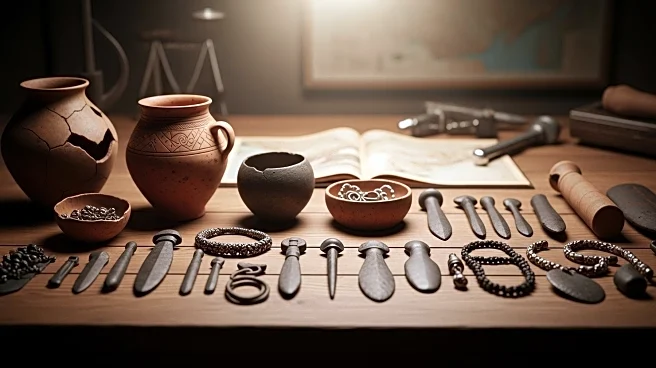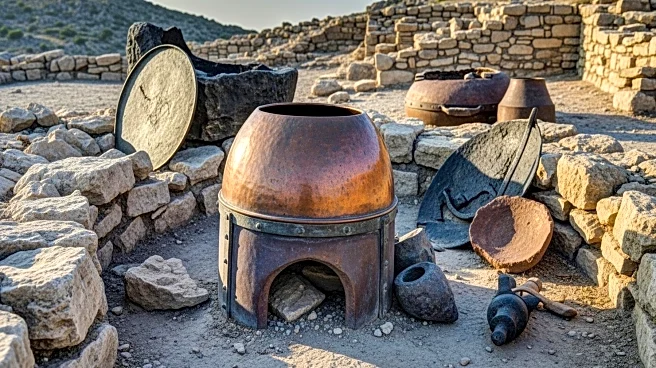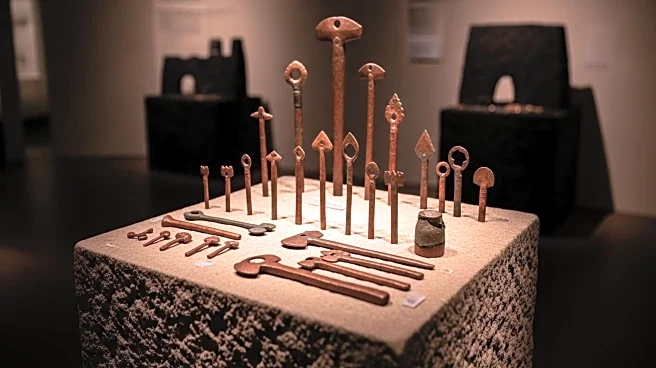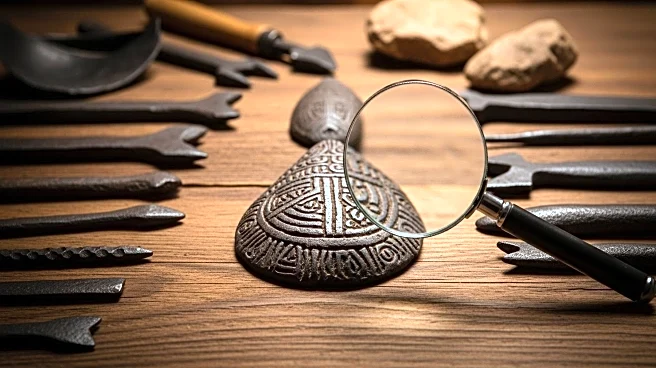What is the story about?
What's Happening?
Research conducted by Cranfield University has provided new insights into the transition from the Bronze Age to the Iron Age, suggesting that copper smelters played a crucial role in the invention of iron. The study reanalyzed metallurgical remains from a 3000-year-old smelting workshop in southern Georgia, known as Kvemo Bolnisi. Initially thought to be an early iron smelting site, the workshop was found to have used iron oxide as a flux in copper smelting, rather than smelting iron itself. This discovery supports the theory that ancient copper metalworkers experimented with iron-bearing materials, paving the way for iron smelting. The research highlights the importance of iron, which, despite being abundant on Earth, was initially more valuable than gold due to its rarity in metallic form. The development of extractive iron metallurgy marked a significant technological transformation, leading to the rise of iron-wielding armies and later industrial advancements.
Why It's Important?
The findings from Cranfield University are significant as they reshape the understanding of how iron metallurgy developed, highlighting the experimental role of copper smelters in this process. Iron has been a cornerstone of industrial development, and understanding its origins can provide insights into technological evolution. The ability to extract and work iron into tools and weapons was a defining moment in human history, leading to advancements in military capabilities and infrastructure development. This research not only contributes to historical knowledge but also underscores the importance of interdisciplinary studies in uncovering the complexities of ancient technologies.
What's Next?
The research opens avenues for further exploration into the origins of iron metallurgy, encouraging archaeologists and historians to reexamine other ancient sites for similar evidence of experimentation. It may lead to a broader understanding of how ancient societies transitioned technologically and how these innovations influenced subsequent historical developments. The study also highlights the potential for modern scientific techniques to uncover historical truths, suggesting that future research could continue to leverage advanced methodologies to explore ancient technologies.
Beyond the Headlines
The study raises ethical and cultural questions about the preservation and interpretation of ancient technologies. It challenges the traditional narratives of technological development, suggesting a more complex interplay of experimentation and innovation. The findings also highlight the importance of preserving archaeological sites and materials, as they hold the key to understanding human history and technological progress. This research could inspire a reevaluation of how ancient technologies are taught and understood in educational contexts.
AI Generated Content
Do you find this article useful?















